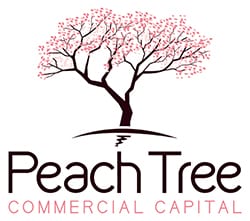Despite the Fed’s higher-than-expected interest rate cut in September, the effects will be slow to creep into the CRE funding market. Pressure from the oncoming wave of debt maturity, valuation difficulties, and weak demand means lender expectations are set to change in 2025, resulting in a more competitive financing environment. Developers on the fence about borrowing should act sooner rather than later as lender appetites for construction may quickly change.
That said, performance in sectors within CRE is beginning to diverge so that a few stand out as more resilient than others. Developers will need to work closely with brokers to identify unique opportunities and take advantage of a few important strategies for success. As lenders impose more restrictions and change their criteria, you can be prepared to pivot to meet these challenges with customized advice from your brokerage.
Current Conditions
On September 18th, the Federal Reserve announced a drop in rates by 50 basis points. The next day, banks announced the new Prime Rate of 8.0%. The resulting surge in the S&P 500 over the following weeks demonstrates how much the change excited investors. But the Fed has made it clear this isn’t a sign of a new trend. Since CRE loan rates are based on much more than the Prime Rate, it has less impact on lending than it might appear.
Supply chains are still fraught with headaches, causing many projects that have already broken ground to stall. Lenders in some cases have granted loan extensions to avoid a mass of defaults. However, when those extensions expire in 2025, they’ll add to the trillion-dollar maturity wave expected to hit next year.
Banks, especially regional banks, and life insurance companies remain the main sources of debt financing for construction. Banks have pulled back leverage from 75% loan-to-cost (LTC) to as low as 50%, meaning borrowers have to find new ways to make up the difference. Equity financing is where the real challenge lies. Those lenders have tightened interest rates and loan terms, now using higher exit rates and debt service coverage ratios (DSCR) in their underwriting.
2025 Predictions
Many CRE sectors are likely to see a dramatic slowdown in growth, but it’s not even across the board. Retail and office will remain dismally low as difficulty in predicting future performance causes lenders to shy away. On the bright side, the numbers for warehouses, data centers, and manufacturing look strong at 40% of the nonresidential market, even if the overall industrial sector has stalled. Reasonable growth expectations for institutional, healthcare, and amusement properties are at 4%, with the most potential in education (per the AIA). This growth could be impacted by immigration levels (which are closely tied to election outcomes). In terms of lending, the slower sectors are likely to see less loan availability than higher-performing sectors.
The bigger banks will see higher defaults as a result of the maturity wave than smaller, regional banks will. There’s also more inherent risk for lenders in leased properties than owner-occupied ones. When borrowers default, the hit to lenders drives CRE prices downward. Diminished ability to meet debt-service requirements also applies downward pressure on available loans. To protect against this risk, lenders now require higher exit rates and DSCRs in their underwriting.
Finally, Some Good News
The key to success is to act now before the lending environment worsens. Our team provides individualized advice based on your business goals and objectives, and helps to clarify how lender expectations have changed overall. Achieving financing goals at this stage may result in less competition in the near term.
Though 2025 may become a challenging environment for new construction financing, there is still opportunity in 2024. By acting before the close of the year, there is the opportunity to gain long-term benefits like a competitive edge over developers who delay, leading to a better position in the market when financing access improves.
In particular, look for financing outside of big banks to find non-traditional lenders who won’t face the same risks. Our team is here to help you match your project to the right financing. We will help you capitalize on what remains of the positive market conditions before the end of the year.

